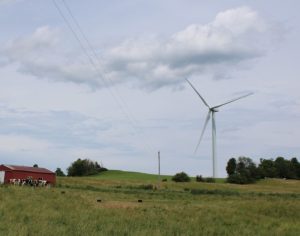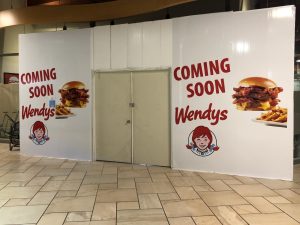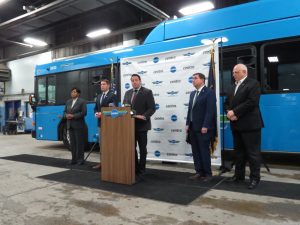A dream you dream alone is only a dream. A dream you dream together is reality. —Yoko Ono ROME — “[The] STEAM conference was the icing on the cake.” “Talking about quantum physics at 3 in the morning with a group of complete strangers was the most fun I ever had.” “Now I’m back home wishing […]
Get Instant Access to This Article
Become a Central New York Business Journal subscriber and get immediate access to all of our subscriber-only content and much more.
- Critical Central New York business news and analysis updated daily.
- Immediate access to all subscriber-only content on our website.
- Get a year's worth of the Print Edition of The Central New York Business Journal.
- Special Feature Publications such as the Book of Lists and Revitalize Greater Binghamton, Mohawk Valley, and Syracuse Magazines
Click here to purchase a paywall bypass link for this article.
A dream you dream alone is only a dream. A dream you dream together is reality. —Yoko Ono
ROME — “[The] STEAM conference was the icing on the cake.”
“Talking about quantum physics at 3 in the morning with a group of complete strangers was the most fun I ever had.”
“Now I’m back home wishing that experience didn’t end.”
“The best week I’ve ever spent; I met so many amazing people.”
“Project Fibonacci was a major success! So grateful for all the memories and [for meeting] amazing people … this past week. Can’t wait to do it again next year.”
These are just some of the testimonials shared by the more than 110 student scholars and guest educators who attended the first Project Fibonacci conference held in Rome July 31-Aug. 6.
“It was a unique opportunity for these students to discover their passion, explore a career, and share their dreams together,” emphasizes Andrew Drozd, the program’s creator and catalyst. Drozd is the founder and chief scientist at ANDRO Computational Solutions, LLC, headquartered in Rome.
“Our country needs its students to be innovators in order to compete globally. Our current focus on STEM (science, technology, engineering, and math) is important, but we need to add the letter “A” for art in order to tie science and the arts together. The concept, which goes back to the Renaissance period, originated with Leonardo Bonacci (nicknamed Fibonacci, which means the son of Bonacci), who lived from 1170 to 1250. He was a mathematician who discovered a branch of mathematics that neatly describes emergent patterns in the realms of science, engineering, nature, art, and music.”
“The program’s student scholars spent an exciting week listening to and meeting with our keynote speakers, science and technology … [luminaries] such as Dr. Alex Filippenko, an astrophysicist and author; Dr. David Eagleman, an author and TV personality of ‘The Brain: The Story of You’; and Alan Bean artist and former astronaut,” says Daniel Kostelec, the Fibonacci outreach coordinator. “The program also included Alan Alda, actor, director, and author; Chris Hadfield, musician and former astronaut; and Dr. Brian Greene, author and TV personality who spoke on Beyond Einstein: Space, Time, and Reality. In addition to the keynote speakers, the scholars participated in workshops and panel discussions with titles such as ‘the science and art of constructing a geodesic dome,’ ‘Fibonacci (art and technology) in musical harmonics,’ and ‘The NASA Space Program.’ They also traveled to local facilities to get an appreciation of the … [economic vibrancy] and the many career opportunities available in our region.”
Drozd set ambitious goals for the conference. “We want to build community involvement; motivate and enlighten the next generation; create scholars, musicians, artists, and engineers; and make the Mohawk Valley and the greater Central New York/Upstate region an entrepreneurial hub built around STEAM,” he stresses. “I was pleased that we received 234 nominations from more than 75 schools and accepted 105. Our exit survey indicated that 92 percent of the participants would return for the 2017 conference, proof of how powerful the [2016] program was. Of the total registrants, the conference partially funded more than 50, with scholarships provided by schools, local companies, and private donations. Forty of the student attendees were high-school juniors, 30 were high-school seniors, and most of the remainder were college undergraduates, almost the exact distribution we had projected.”
Drozd continues, “We were pleasantly surprised to see that 55 percent of our scholars were male and 45 percent female, an indicator that this generation of women is more comfortable pursuing scientific and technical fields. “While the majority of the registrants was interested in science or technology careers, we did have about 20 scholars who were arts- and music-based students. Our geographic reach focused on the Mohawk Valley (69 registrants from Oneida County), but the conference did attract registrants from Downstate and even students from Maine, Florida, and the state of Washington. My greatest disappointment in meeting our 2016 benchmarks was the level of financial support from the community and the lack of interest from the media.”
“Our budget for the 2016 program was approximately $400,000,” notes Ed Talerico, who is serving as the 2017 conference chair and is the director of accounting at ANDRO. “Project Fibonacci raised about $75,000 from tuition, $140,000 from public and private supporters, with ANDRO making up any deficit. Our biggest expense was clearly the cost of … [booking] the keynote speakers. That line item alone was approximately $225,000, more than half of the budget.” Talerico projects the 2017 conference budget will be approximately $500,000. He says the 2017 conference will be set up again with a 501(c)(3) designation for supporters to receive a tax deduction for contributions. Drozd expects that the conference itself will become a 501(c)(3) corporation within the next year under the Project Fibonacci umbrella.
Plans for 2017 conference
“With what we learned from this year’s event, I know we can attract 250 to 300 student scholars to next year’s conference,” Kostelec predicts. “While we will retain the same, general conference format, we will make some changes to the program. For example, we may move the speaker series to the evening in order to attract a broader audience from the community and reorder the program flow by putting the arts and music portions closer to the beginning of the conference. We are also considering running a pre-conference speaker’s series to keep the idea in front of the public and prospective registrants all year. Project Fibonacci is currently in conversation with Mohawk Valley Community College and with SUNY Poly to explore issuing between one and three college credits for attending the conference. This year we had a three-day college fair to which, in 2017, we want to add workshops on résumé writing and enhancing interview skills. Finally, we are considering augmenting the program with bonus material and adding a few extra days as an option.
“In addition to tweaking the program,” Kostelec continues, “we are planning to do more outreach to promote the event, including more direct pitches to companies to become sponsors, placing more company representatives on the various conference committees, and leveraging social media, especially Facebook and Twitter. We are also ramping up our communication efforts, starting with the recent Fibonacci graduates. We now have more than 100 enthusiastic ambassadors to help spread the word, so we are creating the digital Fibonacci News to stay in touch. Initially, we are sharing videos of the conference which are also going up on You Tube. We are sending our nomination packages to the conference alumni to encourage boosting the number of applicants and including student representatives on our various committees to help plan the 2017 conference.”
Organizing the conference
The Project Fibanocci team learned quickly just how complicated it was to organize a one-week conference. “There were a number of moving parts to put this event together,” stresses Kostelec. “My title is outreach coordinator … [but it could just as well have been juggler.] The process required us to contract with six, recognized, keynote speakers; put together eight workshops with a number of panelists; contact scores of secondary schools and colleges to encourage nominations; review the applications, select the scholars, and provide scholarships; raise the funds; communicate with the community to explain the conference; and promote the event to a variety of audiences.
“We also had to deal with the logistics of feeding, housing, and transporting the STEAM scholars and with assisting the scores of speakers, supporters, and other interested parties who were in attendance. Fortunately, we held the conference at The Beeches, located just north of Rome on a 52-acre campus which contains 70 rooms, a conference center, and commercial-kitchen facilities. In addition to the accommodations, The Beeches provided 90 percent of the meals while addressing a variety of the attendees’ dietary concerns.”
The dream
Drozd’s creation of Project Fibonacci is just the first step of a much larger concept. “There’s no reason we can’t grow Fibonacci here in Rome to attract 700 registrants, and since there are typically 10 weeks in the summer, there’s no reason we can’t expand the program to other cities,” opines Drozd. “The STEAM conference, however, is just the first step in Project Fibonacci. My dream is to build a STEAM campus here in Rome containing a 500-room dormitory, a conference center, and an academic/research center. Orrie Destito (a principal at the Beeches) and I have discussed siting it here at the Beeches to attract kids from kindergarten to college. The curriculum would follow the MURI (multi-disciplinary university research initiatives) concept, which involves teams of researchers investigating topics and opportunities that intersect more than one technical discipline. We have a number of area colleges and universities who could collaborate, and there is a major role for local businesses to help finance the project and to create internships for the scholars. I am already talking with potential investors who see the value and reaching out beyond the Mohawk Valley for support. Frankly, the concept of STEAM is an easy sell.”
ANDRO
Drozd founded ANDRO in 1994 as a niche-oriented R&D company that did groundbreaking work in electromagnetic effects and spectrum management. The company now specializes in simulation tools to analyze co-site and spectrum co-existence issues, offering its customers the ability to perform interactive-computer modeling, simulation, and analysis to ensure that co-located communications don’t interfere with each other. ANDRO leases 25,000 square feet of office space on the Beeches campus and also has offices in Dayton, Ohio and in Syracuse. The company currently employs 45 and is focused on developing more private-sector business, specifically in the growing autonomous-systems sector. ANDRO has grown its revenue by more than 400 percent over the past five years. The Business Journal estimates its annual revenue tops $8 million.
Drozd, 60, was born in Belgium and immigrated to America when he was one-year old. He attended high school in Rome and graduated from Syracuse University, where he received a bachelor’s degree in physics and math, and, in 1982, a master’s degree in electrical engineering. His career includes stints at the Rome Air Development Center, IIT Research Institute, General Electric, and Kaman Sciences Corp. Drozd has also taught physics at Utica College.
“We need to appeal to a wider community,” posits Drozd, as he looks ahead to 2017. “For a first-time event, though, it went off for the most part without a hitch. Still, I think we have just scratched the surface … Fibonacci is no longer just a dream. With high-profile inspirational speakers; immersion of these student scholars in the STEAM concept; institutional collaboration; and wide, community support, this project is becoming reality. Fibonacci is opening new possibilities, new worlds so students can reach for the stars and realize their potential. Looking back, the student scholars were galvanized by the event and watching their bonding and collective dreaming was inspirational.”
Contact Poltenson at npoltenson@cnybj.com




